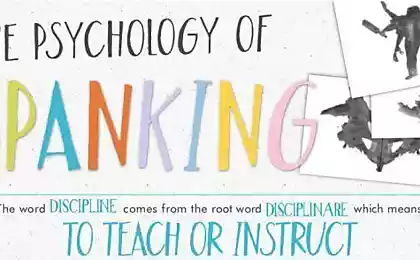555
Gym three times a week does not compensate for a sedentary job!
Physical activity is not only a sport. Everything we do when not standing, not sitting and not lying and there is physical activity (non-training activity). The longer it is, the better for health. Remember that the gym three times a week does not compensate for sedentary work and sitting by the computer and TV at home. In today's article I'll tell you why many of us need to learn activity and to teach her children.
Development is the movementIn special studies, documented facts, showing that children from 7 to 17 years, more developed physically, receive higher scores on tests of intelligence. Children engaged in sports sections, are the best indicators of mental health, which is proved by special experiments.

Experts who have studied the development of intelligence in kids, constantly talking about the sustainable correlation of the level of development of thinking and motor activity of the child, particularly the level of thinking and coordination. Many interesting observations contained in the works of specialists. For example, it is noticed that the child began to walk early, usually ahead of their peers in mental development. Intellectual development of a child occurs in parallel with physical and sensory, this is natural, because the brain is part of the body.
This is explained by the fact that the main and virtually the only way of seeing the world for baby movement. Through movement, he explores and discovers the world around, establishes cognitive contact with the environment. This is due to so important movements in the development of his intellect.
Adaptation of the baby to the outside world is mainly by improving the coordination of perception and movement. A number of scientists, particularly American psychiatrist and educator, Doman, even use a special definition of "physical intelligence". In his books a special system of diagnostics and development of "physical intelligence" at a very early age. The author also refers to its own research and study the experience of dealing with babies of women-Indian women. Giving the baby maximum conditions for free spontaneous movements is an important prerequisite for the satisfaction of search activity and, consequently, the conditions for intellectual and creative development in this age. Naturally, as children get older the tasks set before them, gradually and considerably more complicated and spetsializiruyutsya.
In the early stages of personality development the role of motor activity of the child as the main way of realization of the need to research the behavior, is extremely important. As they grow, its value is objectively reduced, giving way to more complex, specialized activities. Of course, human, Doman, claiming that in the history of mankind there is no more inquisitive researchers than children up to four years. Often, he notes, adults confuse children's curiosity and inability to concentrate. Children, even the little ones, no need to push the search to conduct their own research. The child just enough to give you the freedom to experiment. It is important to remember: the more freedom, the wider range of searches, the more opportunities for the development of cognitive and creative abilities. Special experiments have long shown that limiting the freedom of action of children, expressed in a variety of form — limitation of physical activity or constant "no", "don't go", "do not touch", — can seriously hinder the development of children's curiosity: after all, this restrains the impulses of the child to the studies, and therefore limits the possibility of independent, creative study and understanding of what is happening.
Training immobility attraction to physical activity a part of us since childhood. If you do not take into account cases of obvious congenital abnormalities in the passive person lies a craving for activity. Unfortunately, in our culture, spontaneous non-training physical activity is suppressed and prohibited under various pretexts. Don't run, you'll fall, do not go, and then you pick. Or "will you run – will be removed, vipaccess", children are punished for their physical activity. Perfect for our parents, the child is the one that never goes anywhere, never gets involved, no one speaks, and not spinning. At school and University are absolutely rigid and unnatural modes of immobility and the prohibition of any physical activity breaks.
An important aspect is the imitation of adults. Looking that the adults much of the time lying or sitting, children are trained to behave similarly. Replacement games on television and computer compounds the problem. Moreover, a very large number of parents encourage children to sit at home in front of the screen, as parents easier and more convenient. Over the last thirty years the physical activity of children has declined considerably.
A decrease in physical activity has a great impact on public health and leads to problems, including the increasing prevalence of obesity and chronic diseases such as diabetes and hypertension.
"It has long been known that lifestyle adults greatly affects the lifestyle of the younger generation," says study author Kristen Holm – associate Professor of medicine National Jewish Health Association of Denver in the official interview. In her work shows in detail how the increased activity levels of parents positively affect their children's behavior.
The results of the study showed a direct relationship between the activity of adults and children. So, in those days when mothers walked the distance exceeding 2 000 steps, their children, on average, were about 2 steps over the 117 day period. And if adult family members could not meet this standard, the motivation for their children is also reduced, and the length of their trips rarely exceed 1175 steps. In General, the researchers followed a positive trend: every 1000 extra steps mothers, their children took 196 steps in plus, and more. The researchers saw a similar picture, noting the patterns of activity of fathers and their children.
The movement is the development of the whole person it is Important to understand that physical activity for children (and adults) is vital for the full development of the individual. Developments in the field of intelligence and creativity is highly correlated with the level of development of psychomotor sphere of the child. Talked about this many times and wrote many well-known experts (P. K. Anokhin, N..Bernstein, A. R. Luria, etc.). Many mothers and fathers truly believe that giving your children everything you need: good food, nice clothes, not feel sorry for them neither the strength nor the time nor the money. And ask what they are doing to correct physical education of the child? And it turns out that loving parents do not even think about these issues.

Scholarly articles published by over 20 researchers in monographs, titled "the Link between physical activity in childhood health of the brain, cognition and student success" indicate that physical activity in schools has decreased partially because of the growing attention to student performance and academic testing, but, in fact, a decrease in physical activity leads to lower performance.
In this academic year in the United States was approximately 55.5 million children from pre-school to 12th grade. According to the study presented in the monograph, despite the differences in different States and schools, there is a General trend to a reduction in opportunities to engage in physical activity.
Meanwhile, physically active children tend to outperform their inactive peers in the classroom and in the performance tests. Research presented in the monograph helps to understand why. Compared with their less able peers, those involved in increasing the level of physical activity, have a large volume of brain in the basal ganglia and hippocampus, areas associated with cognitive control and memory. Cognitive control refers to the control over the thinking, actions, behavior and decision-making. Also when compared with less active peers, physically active children have increased concentration and attention. The authors come to the conclusion that fitness training is associated with the ability to inhibit attention to competing stimuli during a task performance. There is an ability that can help children to concentrate and persevere in completing the task. The results of studies on the attention span of children with special needs and typically developing children. The authors also report positive effects of physical activity as a drug intervention for children with attention deficit / hyperactivity disorder and children with autism spectrum disorders. According to Dr. Charles Hillman, Professor of kinesiology and community health at the University of Illinois at Urbana-Champaign and lead author on this topic Monographs, these results point to the important potential of approaches aimed at increasing physical activity to promote health of the brain of children and education level.
Hillman also notes that the conclusions contained in the monograph, taken not only from the studies about changes in physical activity and physical fitness, as they occur quite spontaneously among children, but also from studies in which children are not regular in physical activity or continue my active lifestyle at the same level. This helps to ensure that the relationship between physical activity, brain development and the level of mastering knowledge is actually caused by differences in the activities, and do not reflect the characteristics of children who want to be more or less active physically. Promoting physical activity Therefore, parents should pay attention to the education of the spontaneous physical activity of children. This is one of the most important conditions for their full development.
1. Not to interfere. Do not interfere in the play and activity of children, let them play on their own. Exception – a situation where they face a real (underline real) security threat.
2. Encouraged. Should encourage physical activity of the child. Already in 1.5-2 years the child is able to travel a distance of 100-200 m...
3. To offer. Offer different types of activity, but don't insist.
4. Don't make comments that they got dirty because of the activity. Or wear street clothes or teach how to efficiently perform a particular movement. Better, of course, do not interfere.
5. Maximum non-training and training activity. For children and adolescents physical activity is first and foremost a mobile game, targeted sports (including training with additional weights), travel on rollerblades/scooters/bicycles, sports lessons in schools or planned exercise, in the framework of family, school and their district.
6. Max games. Encourage and teach. The game is the best stimulator of children's development, the game teaches children to interact, negotiate and, of course, to move. Also this is a unique opportunity for self-expression and spontaneity. published
Author: Andrey Blueskin
P. S. And remember, only by changing their consumption — together we change the world! ©
Join us in Facebook , Vkontakte, Odnoklassniki
Source: www.beloveshkin.com/2015/10/vyuchennaya-nepodvizhnost-ot-roditelej-k-detyam.html
Development is the movementIn special studies, documented facts, showing that children from 7 to 17 years, more developed physically, receive higher scores on tests of intelligence. Children engaged in sports sections, are the best indicators of mental health, which is proved by special experiments.

Experts who have studied the development of intelligence in kids, constantly talking about the sustainable correlation of the level of development of thinking and motor activity of the child, particularly the level of thinking and coordination. Many interesting observations contained in the works of specialists. For example, it is noticed that the child began to walk early, usually ahead of their peers in mental development. Intellectual development of a child occurs in parallel with physical and sensory, this is natural, because the brain is part of the body.
This is explained by the fact that the main and virtually the only way of seeing the world for baby movement. Through movement, he explores and discovers the world around, establishes cognitive contact with the environment. This is due to so important movements in the development of his intellect.
Adaptation of the baby to the outside world is mainly by improving the coordination of perception and movement. A number of scientists, particularly American psychiatrist and educator, Doman, even use a special definition of "physical intelligence". In his books a special system of diagnostics and development of "physical intelligence" at a very early age. The author also refers to its own research and study the experience of dealing with babies of women-Indian women. Giving the baby maximum conditions for free spontaneous movements is an important prerequisite for the satisfaction of search activity and, consequently, the conditions for intellectual and creative development in this age. Naturally, as children get older the tasks set before them, gradually and considerably more complicated and spetsializiruyutsya.
In the early stages of personality development the role of motor activity of the child as the main way of realization of the need to research the behavior, is extremely important. As they grow, its value is objectively reduced, giving way to more complex, specialized activities. Of course, human, Doman, claiming that in the history of mankind there is no more inquisitive researchers than children up to four years. Often, he notes, adults confuse children's curiosity and inability to concentrate. Children, even the little ones, no need to push the search to conduct their own research. The child just enough to give you the freedom to experiment. It is important to remember: the more freedom, the wider range of searches, the more opportunities for the development of cognitive and creative abilities. Special experiments have long shown that limiting the freedom of action of children, expressed in a variety of form — limitation of physical activity or constant "no", "don't go", "do not touch", — can seriously hinder the development of children's curiosity: after all, this restrains the impulses of the child to the studies, and therefore limits the possibility of independent, creative study and understanding of what is happening.
Training immobility attraction to physical activity a part of us since childhood. If you do not take into account cases of obvious congenital abnormalities in the passive person lies a craving for activity. Unfortunately, in our culture, spontaneous non-training physical activity is suppressed and prohibited under various pretexts. Don't run, you'll fall, do not go, and then you pick. Or "will you run – will be removed, vipaccess", children are punished for their physical activity. Perfect for our parents, the child is the one that never goes anywhere, never gets involved, no one speaks, and not spinning. At school and University are absolutely rigid and unnatural modes of immobility and the prohibition of any physical activity breaks.
An important aspect is the imitation of adults. Looking that the adults much of the time lying or sitting, children are trained to behave similarly. Replacement games on television and computer compounds the problem. Moreover, a very large number of parents encourage children to sit at home in front of the screen, as parents easier and more convenient. Over the last thirty years the physical activity of children has declined considerably.
A decrease in physical activity has a great impact on public health and leads to problems, including the increasing prevalence of obesity and chronic diseases such as diabetes and hypertension.
"It has long been known that lifestyle adults greatly affects the lifestyle of the younger generation," says study author Kristen Holm – associate Professor of medicine National Jewish Health Association of Denver in the official interview. In her work shows in detail how the increased activity levels of parents positively affect their children's behavior.
The results of the study showed a direct relationship between the activity of adults and children. So, in those days when mothers walked the distance exceeding 2 000 steps, their children, on average, were about 2 steps over the 117 day period. And if adult family members could not meet this standard, the motivation for their children is also reduced, and the length of their trips rarely exceed 1175 steps. In General, the researchers followed a positive trend: every 1000 extra steps mothers, their children took 196 steps in plus, and more. The researchers saw a similar picture, noting the patterns of activity of fathers and their children.
The movement is the development of the whole person it is Important to understand that physical activity for children (and adults) is vital for the full development of the individual. Developments in the field of intelligence and creativity is highly correlated with the level of development of psychomotor sphere of the child. Talked about this many times and wrote many well-known experts (P. K. Anokhin, N..Bernstein, A. R. Luria, etc.). Many mothers and fathers truly believe that giving your children everything you need: good food, nice clothes, not feel sorry for them neither the strength nor the time nor the money. And ask what they are doing to correct physical education of the child? And it turns out that loving parents do not even think about these issues.

Scholarly articles published by over 20 researchers in monographs, titled "the Link between physical activity in childhood health of the brain, cognition and student success" indicate that physical activity in schools has decreased partially because of the growing attention to student performance and academic testing, but, in fact, a decrease in physical activity leads to lower performance.
In this academic year in the United States was approximately 55.5 million children from pre-school to 12th grade. According to the study presented in the monograph, despite the differences in different States and schools, there is a General trend to a reduction in opportunities to engage in physical activity.
Meanwhile, physically active children tend to outperform their inactive peers in the classroom and in the performance tests. Research presented in the monograph helps to understand why. Compared with their less able peers, those involved in increasing the level of physical activity, have a large volume of brain in the basal ganglia and hippocampus, areas associated with cognitive control and memory. Cognitive control refers to the control over the thinking, actions, behavior and decision-making. Also when compared with less active peers, physically active children have increased concentration and attention. The authors come to the conclusion that fitness training is associated with the ability to inhibit attention to competing stimuli during a task performance. There is an ability that can help children to concentrate and persevere in completing the task. The results of studies on the attention span of children with special needs and typically developing children. The authors also report positive effects of physical activity as a drug intervention for children with attention deficit / hyperactivity disorder and children with autism spectrum disorders. According to Dr. Charles Hillman, Professor of kinesiology and community health at the University of Illinois at Urbana-Champaign and lead author on this topic Monographs, these results point to the important potential of approaches aimed at increasing physical activity to promote health of the brain of children and education level.
Hillman also notes that the conclusions contained in the monograph, taken not only from the studies about changes in physical activity and physical fitness, as they occur quite spontaneously among children, but also from studies in which children are not regular in physical activity or continue my active lifestyle at the same level. This helps to ensure that the relationship between physical activity, brain development and the level of mastering knowledge is actually caused by differences in the activities, and do not reflect the characteristics of children who want to be more or less active physically. Promoting physical activity Therefore, parents should pay attention to the education of the spontaneous physical activity of children. This is one of the most important conditions for their full development.
1. Not to interfere. Do not interfere in the play and activity of children, let them play on their own. Exception – a situation where they face a real (underline real) security threat.
2. Encouraged. Should encourage physical activity of the child. Already in 1.5-2 years the child is able to travel a distance of 100-200 m...
3. To offer. Offer different types of activity, but don't insist.
4. Don't make comments that they got dirty because of the activity. Or wear street clothes or teach how to efficiently perform a particular movement. Better, of course, do not interfere.
5. Maximum non-training and training activity. For children and adolescents physical activity is first and foremost a mobile game, targeted sports (including training with additional weights), travel on rollerblades/scooters/bicycles, sports lessons in schools or planned exercise, in the framework of family, school and their district.
6. Max games. Encourage and teach. The game is the best stimulator of children's development, the game teaches children to interact, negotiate and, of course, to move. Also this is a unique opportunity for self-expression and spontaneity. published
Author: Andrey Blueskin
P. S. And remember, only by changing their consumption — together we change the world! ©
Join us in Facebook , Vkontakte, Odnoklassniki
Source: www.beloveshkin.com/2015/10/vyuchennaya-nepodvizhnost-ot-roditelej-k-detyam.html
10 psychological principles of self-care: Substitute psychologist and cosmetologist
Maloideae or conscious caloric restriction diet























